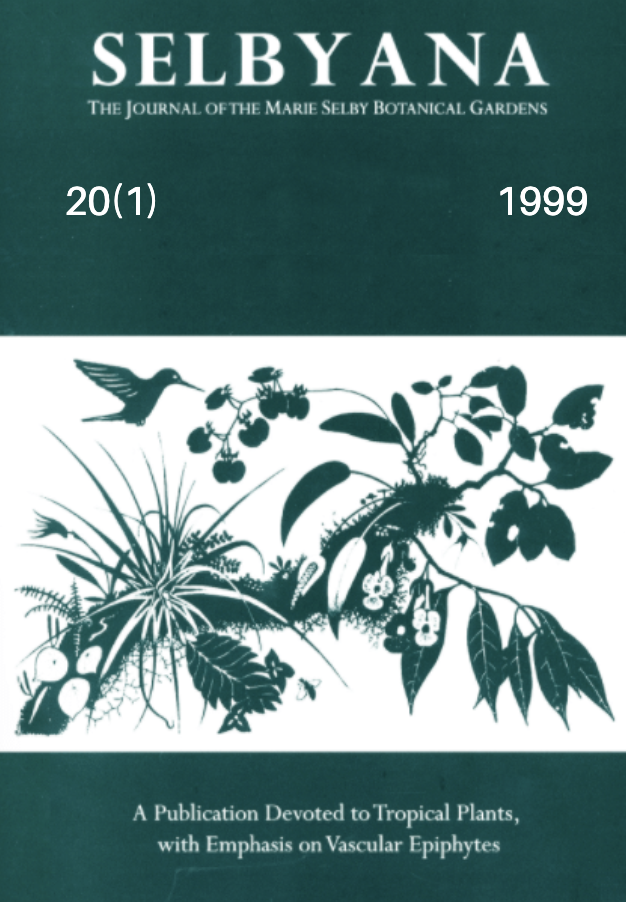Abstract
Although 10% of all vascular plant species are epiphytic, few studies of genetic diversity in epiphytes have been completed. We used random amplified polymorphic DNA (RAPD) markers to investigate genetic diversity in temperate populations of the epiphytic orchid Epidendrum conopseum and in the epiphytic fern Pleopeltis polypodioides (resurrection fern). Three populations of each species were sampled in North Carolina and South Carolina, totaling 52 plants of E. conopseum and 20 specimens of P. polypodioides. Seven random primers produced 11 polymorphic RAPD markers in E. conopseum, while three primers yielded 14 variable markers in P. polypodioides. An analysis of molecular variation partitioned 85.1% of the variation within populations of E. conopseum and only 14.9% among populations. Pleopeltis polypodioides was found to maintain slightly greater population subdivision, with 76.4% of the total variation within populations and 23.6% among populations. The results suggest extensive gene flow among populations of both species, particularly in E. conopseum. The lack of population differentiation in these epiphytes may be associated with the effective wind dispersal of spores and seeds from the canopy habitat.
Open Access and Copyright Notice
Selbyana is committed to real and immediate open access for academic work. All of Selbyana's articles and reviews are free to access immediately upon publication. There are no author charges (APCs) prior to publication, and no charges for readers to download articles and reviews for their own scholarly use. To facilitate this, Selbyana depends on the financial backing of the Marie Selby Botanical Gardens, the hard work and dedication of its editorial team and advisory board, and the continuing support of its network of peer reviewers and partner institutions.
Authors are free to choose which open license they would like to use for their work. Our default license is the Creative Commons Attribution-NonCommercial 4.0 (CC BY-NC 4.0). While Selbyana’s articles can be copied by anyone for noncommercial purposes if proper credit is given, all materials are published under an open-access license with authors retaining full and permanent ownership of their work. The author grants Selbyana a perpetual, non-exclusive right to publish the work and to include it in other aggregations and indexes to achieve broader impact and visibility.
Authors are responsible for and required to ascertain that they are in possession of image rights for any and all photographs, illustrations, and figures included in their work or to obtain publication or reproduction rights from the rights holders. Contents of the journal will be registered with the Directory of Open Access Journals and similar repositories. Authors are encouraged to store their work elsewhere, for instance in institutional repositories or personal websites, including commercial sites such as academia.edu, to increase circulation (see The Effects of Open Access).
